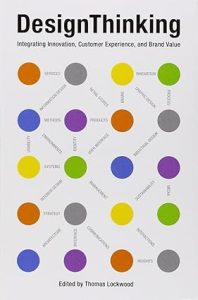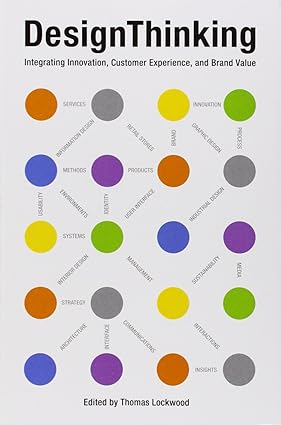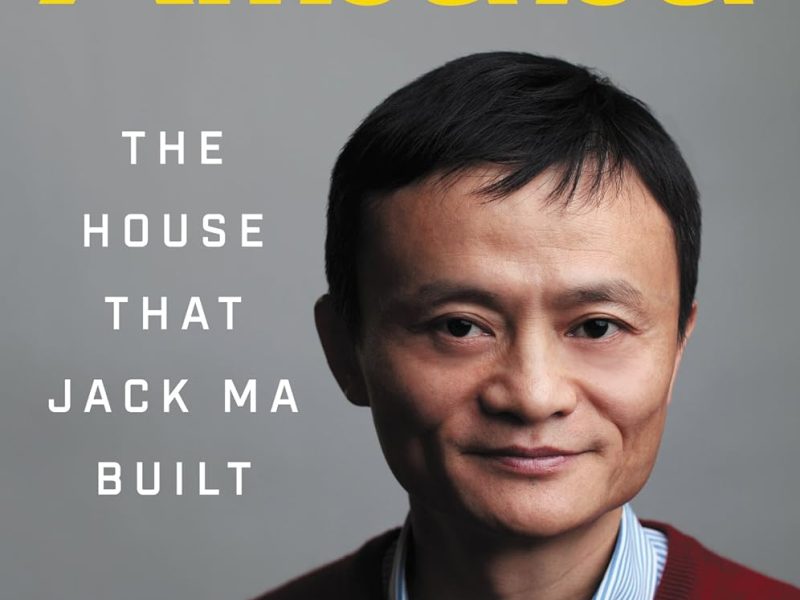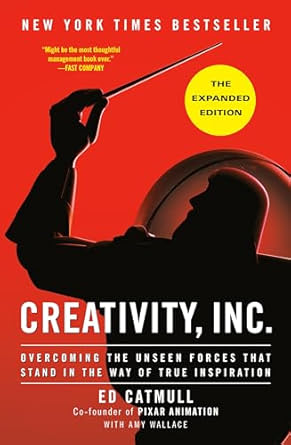Unlocking the Power of Human-Centered Innovation

In an era where innovation drives economic growth and customer loyalty defines market leaders, Thomas Lockwood’s Design Thinking: Integrating Innovation, Customer Experience, and Brand Value offers a compelling roadmap for businesses seeking to thrive. Edited by Lockwood, a renowned design management expert and president of the Design Management Institute (DMI), this book synthesizes insights from 34 global thought leaders across industries. It explores how design thinking—a human-centered, iterative approach to problem-solving—can transform organizations, products, and services.
This blog post delves into the book’s core themes, featuring quotes from contributors, actionable insights for product development, and real-world examples of innovation across industries. Whether you’re a designer, business leader, or entrepreneur, these lessons will inspire you to rethink how creativity and strategy intersect.
What is Design Thinking?
At its core, design thinking is a methodology that prioritizes empathy, collaboration, and experimentation. As Lockwood explains:
“Design thinking is essentially a human-centered innovation process that emphasizes observation, collaboration, fast learning, visualization of ideas, rapid concept prototyping, and concurrent business analysis.”
Unlike traditional linear processes, design thinking embraces ambiguity. It encourages teams to fail quickly, iterate often, and align solutions with both user needs and business goals. The book positions design thinking as a bridge between creativity and strategy, capable of addressing “wicked problems”—complex challenges with no clear solutions.
Key pillars of design thinking highlighted in the book include:
- Empathy: Understanding users’ unarticulated needs through ethnographic research.
- Collaboration: Cross-functional teamwork to integrate diverse perspectives.
- Prototyping: Rapid visualization of ideas to accelerate learning.
- Business Integration: Aligning creative solutions with financial and operational realities.
Quotes from the Authors
The book’s contributors—ranging from corporate leaders to academics—emphasize design thinking’s transformative potential:
- Marty Neumeier (President, Neutron):
“Design is rapidly moving from posters and toasters to include processes, systems, and organizations. To succeed, companies must be agile, nurture inventiveness, and have an enterprise-wide appetite for radical ideas.”
- Julian Jenkins (2nd Road):
“The real challenge for design leaders is to reshape the modern organization to create an ecosystem conducive to design. This requires cultural transformation, not just new processes.”
- Heather Fraser (Rotman School of Management):
“Business design is about creating a model for symbiotically delivering market value and enterprise value. It’s not just what you design—it’s how you design the business itself.”
- Brigitte Borja de Mozota (Université Paris X):
“Design’s four powers—differentiator, integrator, transformer, and good business—are keys to unlocking competitive advantage.”
These perspectives underscore design thinking’s versatility: It’s as applicable to service innovation as it is to product development or corporate strategy.
Key Insights for Product Development
The book offers actionable frameworks for embedding design thinking into product development. Here are three standout insights:
1. Start with Deep User Understanding
Lockwood and contributors stress that empathy is the foundation of innovation. Traditional market research often fails to uncover latent needs because it focuses on what users say rather than what they do. Instead, design thinkers advocate ethnographic research—observing users in real-world contexts to identify pain points and opportunities.
Example: Nike’s Nike+ ecosystem, which includes shoes embedded with sensors and an app for tracking runs, emerged from understanding runners’ desires for community and personal achievement. By studying athletes’ habits, Nike realized its product wasn’t just a shoe but a tool for motivation and connection.
2. Prototype Early and Often
Rapid prototyping is central to the design process. By creating low-fidelity models early, teams can test assumptions, gather feedback, and refine concepts before heavy investments.
Example: IBM’s Client Briefing Centers used rough prototypes and role-playing to redesign client experiences. Instead of lengthy PowerPoint presentations, they introduced interactive workshops where clients co-created solutions with IBM teams. This shift led to higher engagement and faster decision-making.
3. Align Design with Business Strategy
Heather Fraser’s Three Gears of Business Design model illustrates how to balance creativity and commerce:
- Gear 1: Deep user insights (empathy).
- Gear 2: Concept visualization (prototyping).
- Gear 3: Strategic business design (integration).
By cycling through these gears, companies like Procter & Gamble and Steelcase have turned user insights into profitable innovations. For instance, Steelcase’s Think Chair—a 98% recyclable office chair—was developed by aligning sustainability goals with ergonomic research and modular design.
The Product Design Process: A Step-by-Step Guide
Drawing from the book’s case studies, here’s a streamlined design thinking process for product development:
1. Define the Problem
Begin by reframing challenges from the user’s perspective. Use tools like “Why?” questioning to uncover root causes.
Example: When 3M engineers partnered with outdoor gear company CAMP7, they asked, “Why does down keep people warm?” This led to the invention of Thinsulate, a synthetic material with superior insulating properties.
2. Conduct Observational Research
Immerse yourself in users’ environments. Look for unarticulated needs and emotional triggers.
Example: At Princess Margaret Hospital, designers observed chemotherapy patients’ frustrations with sterile environments. This inspired a redesigned treatment space with calming aesthetics, personalized scheduling systems, and interactive tools to “turn lost time into found time.”
3. Ideate and Prototype
Encourage wild ideas, then build simple prototypes to test feasibility.
Example: Decathlon’s Quechua 2 Seconds Tent—a tent that self-erects when tossed—was prototyped using cheap materials to validate the concept before scaling production.
4. Iterate with User Feedback
Involve users early in testing. Failures are opportunities to learn.
Example: Pixar’s mantra, “Fail quickly and frequently,” ensures that storyboard flaws are caught long before animation begins.
5. Integrate Business Realities
Ensure solutions align with manufacturing capabilities, cost structures, and brand values.
Example: IKEA’s flat-pack furniture emerged from balancing user demand for affordability with logistical efficiency.
Innovation Across Industries
The book showcases how design thinking drives breakthroughs in diverse sectors:
Healthcare
- Thermography in Skiwear: Lockwood’s early work with 3M used thermal imaging to optimize insulation in outdoor gear, later applied to medical apparel.
- Patient-Centered Care: Hospitals like Princess Margaret use service design to reduce patient anxiety through environmental cues and streamlined processes.
Retail
- Target vs. Walmart: Target’s design-driven strategy, inspired by GM’s 1920s market segmentation, positions it as a premium yet affordable brand.
- Dove’s Real Beauty Campaign: By addressing women’s self-esteem, Dove expanded from soap to a global movement, boosting sales and brand loyalty.
Technology
- IBM’s Client Briefing Centers: Redesigned as collaborative spaces, these centers increased client satisfaction by replacing lectures with hands-on workshops.
- Apple’s Ecosystem: The seamless integration of hardware, software, and services (e.g., iPod + iTunes) exemplifies design thinking’s power to create holistic experiences.
Sustainability
- Steelcase’s Think Chair: Designed for disassembly, this chair reduces waste and aligns with circular economy principles.
- Volkswagen’s Recyclable Cars: VW’s commitment to 85% recyclability demonstrates how design can drive environmental responsibility.
Becoming a Design-Minded Organization
Lockwood concludes with ten principles for embedding design thinking into corporate culture:
- Develop Empathy for Customers: Go beyond surveys—observe behaviors.
- Engage Unique Design Processes: Blend creativity with business rigor.
- Align with Corporate Culture: Design must reflect organizational values.
- Set Design Strategy: Define a visual language and innovation roadmap.
- Integrate Business and Design Strategy: Ensure creativity supports profitability.
- Design for Transformation: Solve systemic challenges, not just symptoms.
- Coordinate Touchpoints: Unify products, services, and communications.
- Focus on Customer Experience: Design “moments of truth” that build loyalty.
- Empower Creativity: Foster a culture of experimentation.
- Lead with Design: Elevate design to a strategic function.
Conclusion
Design Thinking: Integrating Innovation, Customer Experience, and Brand Value is more than a manual—it’s a call to action. By blending human insight with business acumen, organizations can navigate complexity, foster loyalty, and drive growth. As Lockwood writes:
“The real value of design is in discovering and solving all manner of problems. It’s not about what design is—it’s about what design does.”
Whether you’re refining a product, reimagining a service, or transforming a business model, this book offers the tools and inspiration to lead with creativity. In a world where change is the only constant, design thinking isn’t just an advantage—it’s a necessity.
Key Takeaways
- Design thinking bridges creativity and strategy through empathy, prototyping, and iteration.
- Successful products align user needs with business realities.
- Innovation thrives in cultures that embrace collaboration and rapid learning.
- Sustainability and social responsibility are integral to modern design.
For leaders ready to harness design’s full potential, Lockwood’s book is an indispensable guide.


